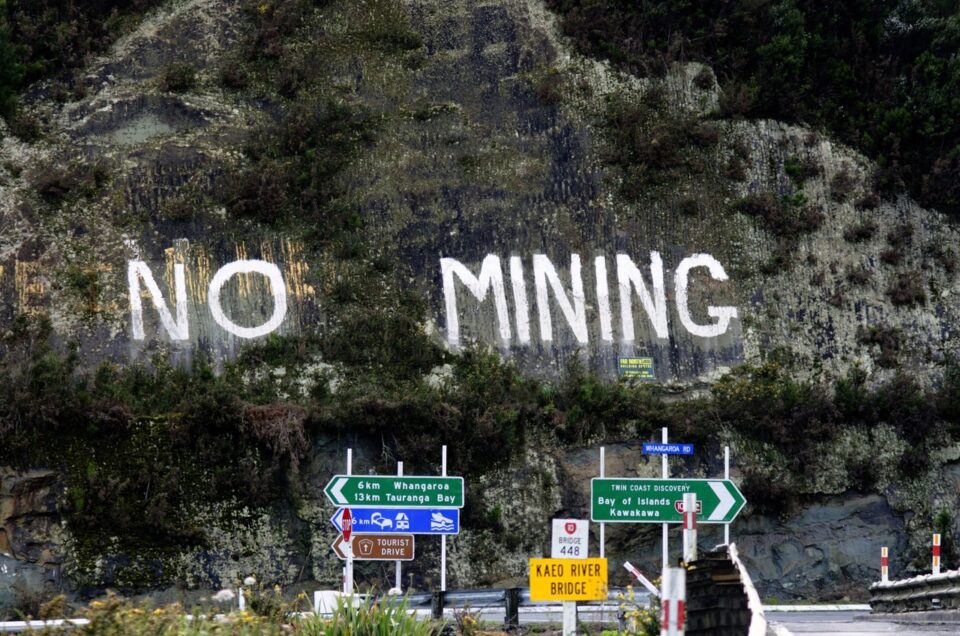Environmental activists were such an intimidating presence at the Victoria University of Wellington careers expo in July that both the Australasian Institute of Mining & Metallurgy and Rio Tinto’s booths were removed.
Associate Professor Martin Brook, director of the Master of Engineering Geology degree, School of Environment, Faculty of Science, University of Auckland, says this was a pity for those involved, including those who had given up their time to talk to university students about possible careers in mining, an industry which holds a huge range of career pathways: engineers, environmental managers, geologists, computer scientists and so on.
In his comment piece in Newsroom (5August) he said, “It’s extremely difficult to have a mature conversation with an environmental activist who demands we reduce our dependence on fossil fuels and is anti-mining but at the same time depends on, and even flaunts, the technology and energy that comes from the mining of minerals.
“Indeed, not only were those protesters preaching to the converted, they were preaching to the very people involved in facilitating the conversion from fossil fuel energy to green energy. It’s as if the demonstrators weren’t aware of the current global mining priorities and the energy transition they’re facilitating.”
Everyone is keen to transition to green energy and renewable energy he says, but a single 3.2 megawatt wind turbine (not a large wind turbine these days) has 300 tonnes of steel (which is manufactured using coking coal) and five tonnes of copper, as well as aluminium.
The International Energy Agency tells us the transition from fossil fuels to clean energy sources will depend on critical energy transition minerals, including copper, lithium, nickel and cobalt – just some of the essential components in many of today’s rapidly growing clean energy technologies, he points out.
“We need minerals for energy, we also need them for our technology. Everything from a soup spoon to a smartphone, and every piece of technology in-between, depends on minerals that come out of the ground. Plastics are derived from oil. Crockery comes from a china clay quarry.
“Our healthcare technology and componentry also require mined products, including the spectacles with which many of us need to see properly, and the forms of transport, including bicycles, trains, buses and even shoes (unless they are wooden clogs). We use mined materials to brush our teeth – the fluoride, sodium lauryl sulphate, calcium and carbonate in our toothpaste.”
Associate Professor Martin Brook points out that the trouble caused at the Victoria University careers expo “exemplifies the cognitive dissonance shown by these activists; undermining people’s law-abiding civil liberties, while walking around with a smartphone and consuming everyday products and technologies that are comprised of mined minerals.”
We need a mature conversation about the extractive industry and how much it benefits us, Brook adds.
“From where I’m sitting, the environmental activists at Victoria University don’t walk their talk, practice what they preach, or put their money where their mouths are.
“The fundamental question for Aotearoa is this: should we expect other countries to extract their raw materials, damaging their environments, to provide the technology that we demand, while imagining ourselves ‘clean and green’? Or should we ‘take one for the team’, and extract what minerals we reasonably can here, and feed these critical minerals into global supply chains?”
Brook challenged the activists to get up with the play. “It might have been useful to demonstrate opposition to mining 10 or 20 years ago, but the (mining) train has left the station and it’s rapidly whizzing toward facilitating our transition to green energy and associated technological innovations, leaving fossil fuels largely in the past. Mining companies and reputable organisations like the Australasian Institute of Mining & Metallurgy should be lauded for the energy transition they help facilitate.”



